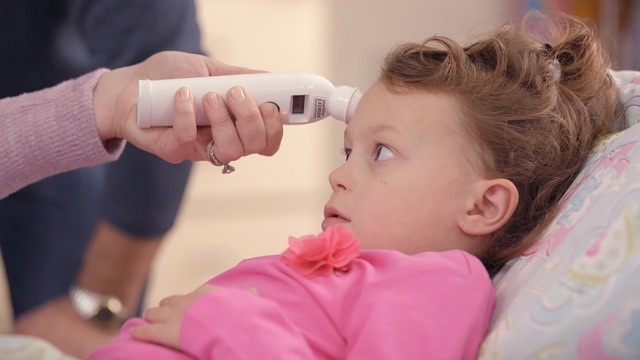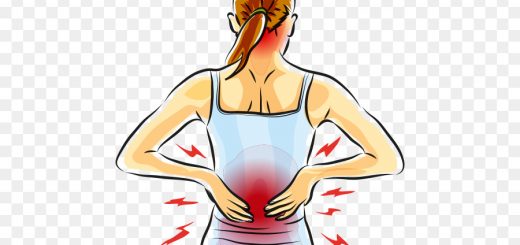Fever in Children: What to Do
Fever is a relatively common symptom in children. It’s helpful in fighting an infection, but it can also be a source of worry and stress for parents who don’t always know when and how to manage it best. Here are some explanations and tips to help you properly deal with fever in children.
Fever in children: understanding what’s going on
If your child seems sick or tired, sure clinical signs (hot forehead, shiny eyes, red cheeks, pallor, pain, etc.) may lead you to believe he or she has a fever.
After eliminating excess protection (blanket, clothing, overheated room), it is necessary to check his temperature with a thermometer. Pediatricians recommend taking a rectal or tympanic temperature, away from meals, and after a 20-minute rest. For information, the average body temperature is between 36.5 and 37.5°C.
A fever occurs when the body temperature rises above 38°C. This temperature rise is a physiological mechanism that helps the body fight against a particular aggression (infection or inflammation): the heat provided stimulates the immune system and destroys certain pathogens.
In children, acute fever (> 38°C) can be a sign of an infectious disease (rhinopharyngitis, otitis, childhood diseases…), a dental flare-up, or a normal post-vaccination reaction proving the effectiveness of the vaccine.
Often benign and short-lived, it can become dangerous if not controlled, especially in infants and young children under 5 years of age, by causing complications such as dehydration, convulsions, or major hyperthermia.
Good to know: the intensity of the fever does not necessarily correspond to a sign of seriousness.
Fever in children: when should you be concerned?

When the fever is moderate, and your child tolerates it well (smiles, eats, and drinks normally), it is unnecessary to treat it. Just monitor it regularly.
It becomes necessary to use an antipyretic medication when the fever exceeds 38.5°C and persists for more than two days or when the child does not tolerate a feverish state well (loss of appetite, insomnia, irritation, pain…).
Emergency consultation is essential for infants under 3 months of age or in the presence of:
- a high temperature (above 40°C) ;
- a general state of health that is deteriorating;
- severe headaches, stiff neck, vomiting;
- dehydration (dry mucous membranes, less frequent urination…);
- stomach aches or abundant diarrhea;
- difficulty breathing.
A consultation is also necessary if the fever persists after a 2-day treatment or reappears when the treatment is stopped, as well as in the presence of any other symptom that worries you.
What can be done about a fever in children?
Simple measures are often enough to limit the temperature rise. They help to keep the child well-hydrated and make him/her more comfortable. They consist in:
- removing superfluous protection (layers of clothing, blankets) without stripping the child completely;
- maintaining the temperature of the room between 19 and 20°C and airing regularly;
- giving him water often to avoid dehydration;
- not forcing him to eat if he is not hungry.
Note: baths, 2°C below body temperature, are no longer recommended, as they can lower the temperature too quickly. However, sometimes they can be helpful, provided the child feels comfortable.
Medication for fever in children
Antipyretic medicines are available without a prescription in different forms adapted to the child’s age (syrup, suppository, sachet…). Three main types of medication are recommended when the child’s temperature is above 38.5°C:
Paracetamol (Efferalgan®, Doliprane®, Dafalgan®…) is the best-tolerated medication and the only one indicated for infants under 3 months of age. It can be used as a first-line treatment to reduce fever and soothe pain.
Ibuprofen (Nurofen®, Advil®…): it can be useful from 3 months of age but has several use restrictions.
Aspirin (Aspegic®): should be avoided in the presence of chickenpox, mumps, or other influenza viruses, because of the risk of a rare but serious disease, Reye’s syndrome. Please do not use it without medical advice.
In all cases, it is advisable not to combine two antipyretics without medical advice. For any medication use, it is imperative to consider a few precautions: to check the absence of contraindications and to respect the dosage, the necessary interval between two takes, and the maximum daily dose. Taking the lowest possible effective amount for the shortest possible time is recommended.
If necessary, the doctor may prescribe other antipyretics and additional treatment in case of fever-related pathology.
Good to know: homeopathic medicines (Aconit®, Bryonia®, Apis®, Belladonna®…) can also, in some instances, act against fever. Ask for advice from a health professional who is competent in homeopathy.



